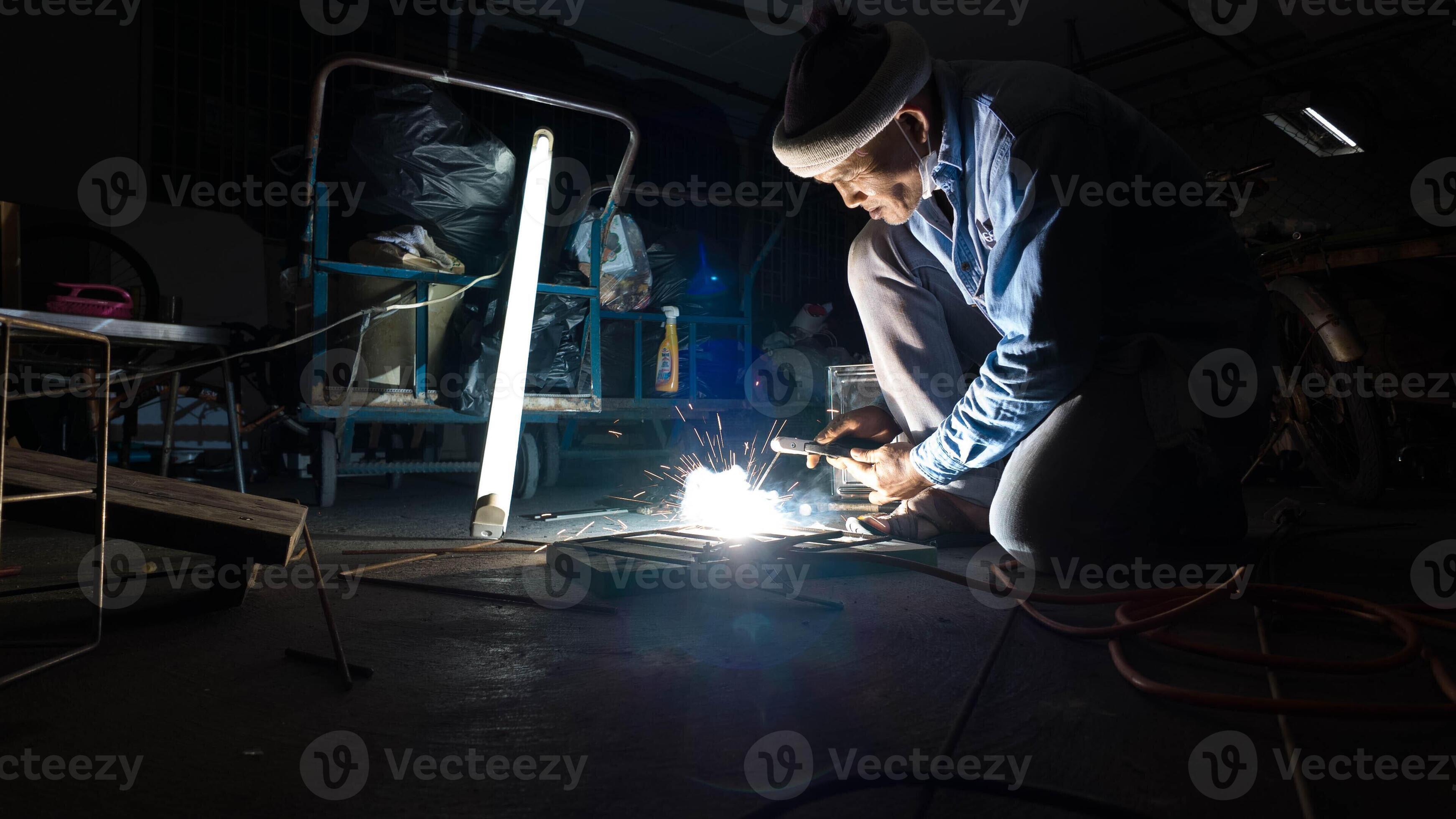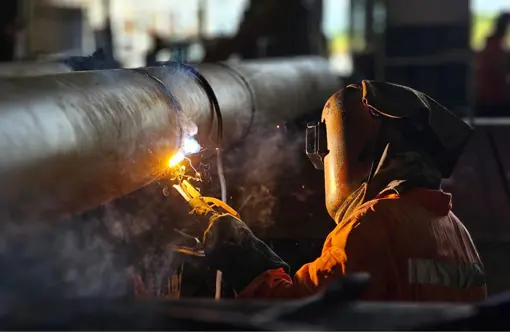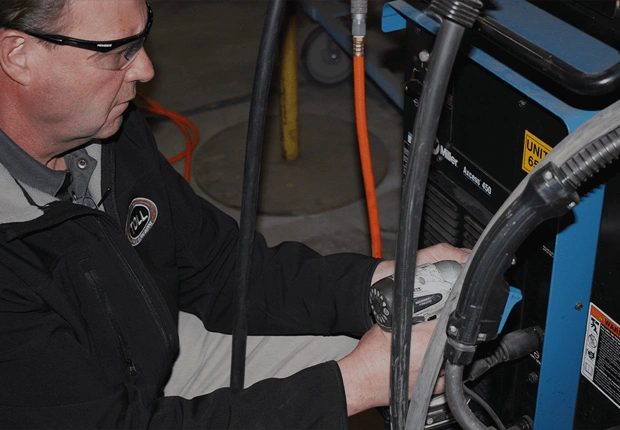Common Welding Repair Service Issues and Exactly How to Address Them Successfully
Welding repairs frequently experience a variety of concerns that can jeopardize the integrity of the end product. Usual troubles consist of poor infiltration, porosity, and imbalance, among others. Each problem provides distinct challenges that require details strategies for resolution. Understanding these issues is essential for welders aiming to improve their results and skills. This conversation will certainly check out these usual welding repair problems and reliable techniques to resolve them.
Insufficient Penetration
Poor infiltration happens when the weld steel falls short to completely fuse with the base material, resulting in weak joints and possible structural failings. This problem typically comes from inadequate heat input, inaccurate electrode angle, or incorrect welding speed. Welders might encounter poor infiltration because of a miscalculation of the essential specifications for a specific material density or kind. Additionally, contamination on the base product's surface area can prevent effective bonding, exacerbating the issue. To deal with poor penetration, welders need to assure ideal settings on their devices and keep a tidy work surface area. Routine assessment of welds is advised to determine any kind of shortages early, allowing for prompt modifications and the avoidance of endangered architectural honesty in bonded settings up.
Porosity
Porosity is a typical defect in bonded joints that manifests as tiny gas bubbles caught within the weld steel. This defect can endanger the integrity of the weld, bring about reduced toughness and prospective failing under tension. Montana Mobile Welding and Repair Belgrade Fabrication. Porosity commonly develops from contamination, dampness, or inappropriate welding strategies, which permit gases to run away right into the liquified weld pool. To attend to porosity, welders should guarantee appropriate surface preparation, maintain a clean working atmosphere, and utilize ideal welding criteria. In addition, picking the right filler product and protecting gas can minimize gas entrapment. Regular evaluation and testing of welds can help identify porosity early, guaranteeing prompt corrective actions are taken, thus protecting the top quality and integrity of the welded framework
Misalignment
Imbalance in welding can occur from different aspects, consisting of incorrect setup and thermal growth. Comprehending the source is essential for efficient resolution. Numerous modification methods are offered to straighten components and guarantee architectural stability.
Sources of Misalignment
Welding misalignment often stems from a selection of underlying concerns that can jeopardize architectural integrity. One key reason is improper fit-up of parts prior to welding, which can cause gaps and uneven surfaces. Variations in thermal growth throughout the welding procedure can likewise result in distortion, especially if the products being joined have various coefficients of growth. Furthermore, insufficient clamping and fixturing might stop working to hold components safely in place, resulting in motion throughout welding. Badly maintained devices, consisting of welding devices and devices, may present variances in the weld grain, further contributing to imbalance. Operator mistake, stemming from insufficient training or experience, can additionally play a substantial function in developing misaligned welds.

Improvement Methods Available
Addressing misalignment properly requires a mix of rehabilitative strategies tailored to the certain concerns available. One typical technique is making use of jigs or components to hold elements in the correct placement during welding, making sure constant positioning. Furthermore, preheating the products can aid reduce distortion and boost fit-up. For substantial imbalance, mechanical realignment techniques, such as using hydraulic jacks or clamps, can be used to deal with the setting prior to welding. Post-weld warmth therapy may likewise be essential to relieve anxieties created by imbalance. Careful examination and modification throughout the setup phase can stop imbalance problems from ending up being significant problems, advertising a smoother welding procedure and enhancing overall structural stability.
Distortion
Distortion is a typical challenge in welding that can develop from various variables, including uneven heating and air conditioning. Recognizing the root causes of distortion is vital for executing effective avoidance techniques. Resolving this problem not only enhances architectural integrity yet also enhances the general quality of the weld.
Reasons for Distortion
When subjected to the extreme warm of welding, materials typically go through changes that can lead to distortion. This sensation primarily develops from thermal development and contraction throughout the welding process. As the weld location warms up, the product expands; upon cooling, it contracts, which can develop interior anxieties. Additionally, unequal heating across a workpiece can exacerbate these stresses, causing warping or bending. The kind of material additionally plays a considerable role; metals with varying thermal conductivity and coefficients of growth might respond differently, bring about unpredictable distortions. Furthermore, poor joint layout and poor fixturing can contribute to misalignment during welding, enhancing the likelihood of distortion. Recognizing these reasons is important for efficient welding repair service and avoidance methods.
Avoidance Techniques
Effective avoidance strategies for distortion during welding emphasis on regulating warm input and guaranteeing appropriate joint style. Maintaining a constant warmth input helps to lessen thermal growth and contraction, view website which can result in distortion. Making use of techniques such as pre-heating the workpiece can likewise lower the temperature gradient, advertising consistent heating. Furthermore, choosing appropriate joint styles, such as T-joints or lap joints, can improve stability and minimize tension concentrations. Carrying out proper fixturing to secure the work surfaces in position better help in preserving alignment throughout the welding procedure. Ultimately, staggered welding sequences can distribute warm much more equally, preventing localized distortion. By applying these methods, welders can greatly lower the probability of distortion and boost the overall quality of click this link their welds.
Cracking
Breaking is a common concern experienced in welding repairs, frequently resulting from numerous factors such as incorrect cooling rates, product choice, or insufficient joint prep work. The incident of fractures can significantly jeopardize the stability of the weld, resulting in potential failures throughout operation. To address this problem, welders have to initially assess the source, guaranteeing that materials are suitable and properly chosen for the details application. Furthermore, controlling the air conditioning rate during the welding procedure is essential; quick air conditioning can generate anxiety and bring about cracking. Correct joint layout and prep work also add to minimizing the risk. Applying these approaches can enhance weld top quality and durability, eventually lowering the chance of fracturing in finished weldments.

Incomplete Fusion
A substantial issue in welding repair services is insufficient combination, which happens when the weld steel does not sufficiently bond with the base product or previous weld passes - Montana Mobile Welding and Repair Belgrade Welding. This problem can result in weak points in the joint, possibly jeopardizing the integrity of the welded structure. Aspects adding to incomplete fusion consist of not enough warmth input, incorrect welding strategy, and contamination of the surfaces being signed up with. To address this issue successfully, welders must assure appropriate pre-weld cleaning and surface prep work, along with adjust their welding specifications to accomplish sufficient infiltration and combination. Routine assessment throughout the welding procedure can additionally aid identify incomplete blend early, permitting prompt rehabilitative measures to improve the general top quality of the weld
Overheating
While welding repair work can boost structural honesty, overheating provides a significant difficulty that can bring about material deterioration. Excessive heat throughout welding can internet alter the mechanical homes of steels, leading to decreased strength, increased brittleness, and warping. This phenomenon is particularly important in high-stress applications where architectural dependability is vital. Identifying getting too hot can include aesthetic examinations for discoloration or distortion, in addition to checking temperature during the welding procedure. To mitigate the threats related to overheating, welders should employ ideal techniques, such as managing warm input, adjusting travel speed, and using ideal filler materials. Furthermore, implementing pre- and post-weld warmth treatments can aid recover product buildings and improve the total quality of the fixing, making certain long-term efficiency and safety.
Often Asked Inquiries
What Are the Common Indications of a Welding Flaw?

Exactly How Can I Examine My Welds for Quality?
To evaluate welds for quality, one can use aesthetic inspections, ultrasonic testing, and radiographic approaches. Each technique ensures structural stability, determines flaws, and validates adherence to defined standards, ultimately enhancing the reliability of the bonded joints.
What Safety Safety Measures Should I Take While Welding?
When welding, one ought to focus on safety by putting on ideal personal safety devices, ensuring correct air flow, safeguarding flammable products away, preserving a tidy workspace, and being aware of surroundings to stop injuries and mishaps.
Can I Fix a Weld Without Redoing the Entire Joint?
Fixing a weld without redesigning the whole joint is possible, relying on the damages (Belgrade Fabrication). Strategies such as grinding, adding filler material, or utilizing a welding process can efficiently attend to particular problems while protecting the surrounding structure
What Devices Are Crucial for Efficient Welding Repairs?
Essential tools for reliable welding repair work include a welding device, cable brush, grinder, safety gear, clamps, and filler materials. Each device plays a crucial role in ensuring top quality and safety throughout the repair work procedure. Porosity normally emerges from contamination, wetness, or inappropriate welding techniques, which allow gases to leave into the liquified weld pool. Inadequately maintained tools, consisting of welding devices and tools, may introduce incongruities in the weld grain, additional adding to imbalance. When subjected to the extreme warm of welding, materials often go through modifications that can lead to distortion. Fracturing is a typical issue come across in welding repairs, frequently resulting from various factors such as inappropriate cooling rates, product option, or insufficient joint preparation. A considerable concern in welding repairs is insufficient fusion, which happens when the weld metal does not appropriately bond with the base material or previous weld passes.